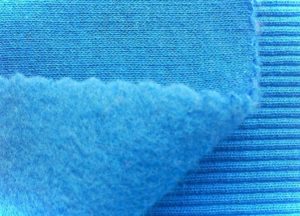 When choosing material for sewing household items and children's clothes, housewives often ask themselves: which one is better to use? One aspect remains unchanged - it must be a natural product containing cotton or wool, with good tactile qualities. Knitted varieties best fit this description. To make a specific choice, it is worth considering the properties of two known types.
When choosing material for sewing household items and children's clothes, housewives often ask themselves: which one is better to use? One aspect remains unchanged - it must be a natural product containing cotton or wool, with good tactile qualities. Knitted varieties best fit this description. To make a specific choice, it is worth considering the properties of two known types.
Footer and lining fabrics: what is the main difference
These are one of the most popular varieties. They are in demand due to their low price, wide variety of colored textures and the ability to be used for sewing any products - from diapers for babies to fashionable summer jackets. But there are still slight differences in these names: kulirka is more suitable for sewing home and children's clothing, and footer is more suitable for making warmer everyday items.
Footer: what kind of fabric
 A type of knitwear with high elasticity. Clothes made from it easily take the shape of the body and do not restrict movement.The composition does not cause allergic irritations even with heavy sweating, allows the body to breathe, the fabric is breathable and absorbs moisture well. The presence of back pile and dense structure help retain heat. Practical weaving technology eliminates the appearance of pilling, the fabric can withstand repeated washing, and does not lose tensile strength over time. The only drawback: in places of strong friction it becomes thin.
A type of knitwear with high elasticity. Clothes made from it easily take the shape of the body and do not restrict movement.The composition does not cause allergic irritations even with heavy sweating, allows the body to breathe, the fabric is breathable and absorbs moisture well. The presence of back pile and dense structure help retain heat. Practical weaving technology eliminates the appearance of pilling, the fabric can withstand repeated washing, and does not lose tensile strength over time. The only drawback: in places of strong friction it becomes thin.
Characteristics of the cooler
 This type of fabric is made from cotton. These raw materials are known for their thermoregulating ability. Clothes made from natural cotton are not stuffy in hot weather or cold in bad weather. Often a small percentage of synthetic threads are added to the composition of the fabric, which gives the future product strength and richness of colors. Such a thing will be worn for a long time, retain its shape without compromising hypoallergenicity and pleasant tactile sensations.
This type of fabric is made from cotton. These raw materials are known for their thermoregulating ability. Clothes made from natural cotton are not stuffy in hot weather or cold in bad weather. Often a small percentage of synthetic threads are added to the composition of the fabric, which gives the future product strength and richness of colors. Such a thing will be worn for a long time, retain its shape without compromising hypoallergenicity and pleasant tactile sensations.
Differences between footer and cooler in appearance
The two types of knitted fabric differ in the way the fabric is woven. The kulirka is smooth; on its front side you can see braids that fit tightly to each other, and on the back side there is a weave in the form of brickwork. The footer also has a smooth front side, but on the back it has a slight fleece.
How does the composition of the footer differ from the composition of the cooler?
 Often, woolen threads and elastic lycra are used to make the first item. The second grade is mainly obtained by combining cotton and polyester threads.
Often, woolen threads and elastic lycra are used to make the first item. The second grade is mainly obtained by combining cotton and polyester threads.


 0
0





